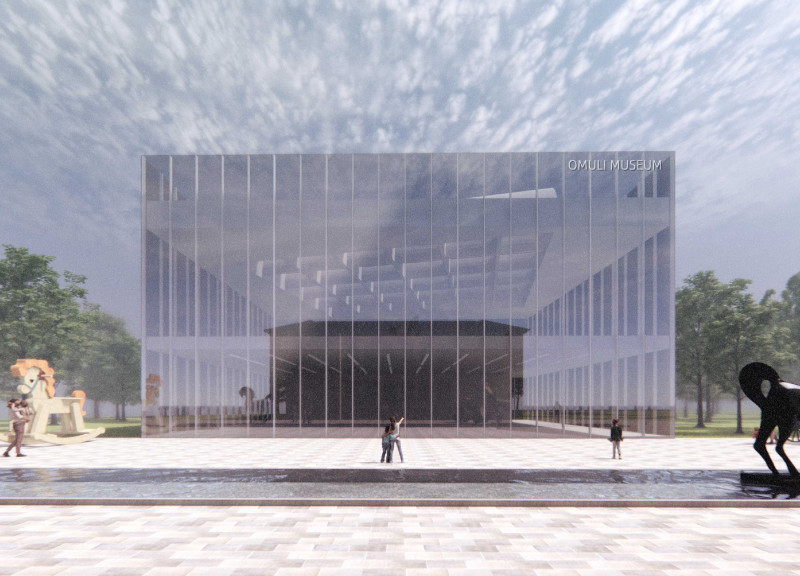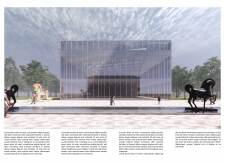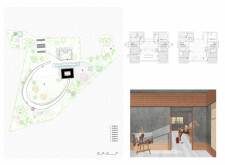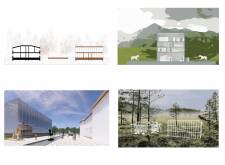5 key facts about this project
The design of the Omuli Museum features a blend of transparency and solidity, with extensive use of glass that allows natural light to flood the interior spaces. This choice not only creates a seamless connection between the inside and outside but also promotes an immersive experience for visitors. The strategic placement of the building within its site enhances its relationship to the surrounding landscape, inviting guests to engage with both the museum’s interior and the outdoor areas.
Key elements of the project include expansive gallery spaces that are flexible and adaptable, accommodating a variety of exhibits and events. These spaces are complemented by communal areas designed for workshops and educational activities. The layout encourages an intuitive flow, guiding visitors through the various functions of the museum, while also integrating public areas such as plazas and gardens for community interaction.
One of the more unique approaches taken in the design is the focus on sustainable architecture. The integration of local materials such as wood, concrete, and natural stone not only roots the project in its regional context but also emphasizes environmental responsibility. The careful selection of materials augments the aesthetic appeal while minimizing the ecological footprint. For instance, the use of wood in certain structural elements adds warmth to the interiors, while concrete provides stability and durability.
In addition to the architectural design, the landscaping plays a crucial role in the overall experience of the museum. The site features walking paths and garden zones designed to encourage exploration, with native plant species enhancing the local ecosystem. Sculptures and other outdoor artworks are strategically placed throughout the grounds, creating points of interest and promoting an artistic dialogue with the architecture.
The Omuli Museum is not only a space for exhibitions but also acts as a community hub, encouraging engagement and interaction among diverse groups. The design encourages gatherings, discussions, and collaborative projects, making it a vital resource for the local community. The architectural approach fosters a sense of belonging and participation, reinforcing the museum’s role as an educational haven that celebrates both art and nature.
The unique design of the Omuli Museum, with its emphasis on light, materiality, and community, sets it apart as an innovative architectural project. Each aspect of the design, from the layout to the selection of materials, reflects a commitment to creating a functional and inviting space. For those interested in delving deeper into the architectural details, exploring the architectural plans, architectural sections, and architectural designs will provide further insights into this remarkable project. The thoughtful integration of these elements offers a comprehensive understanding of the creative ideas that shaped the Omuli Museum and its intended impact on the community.


























